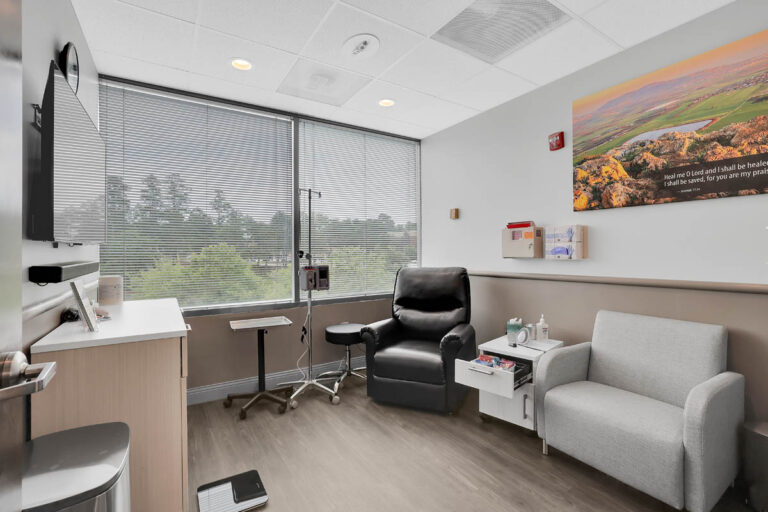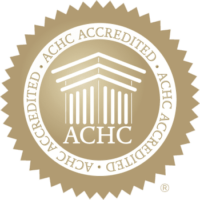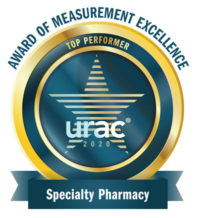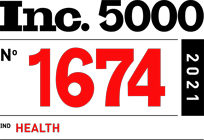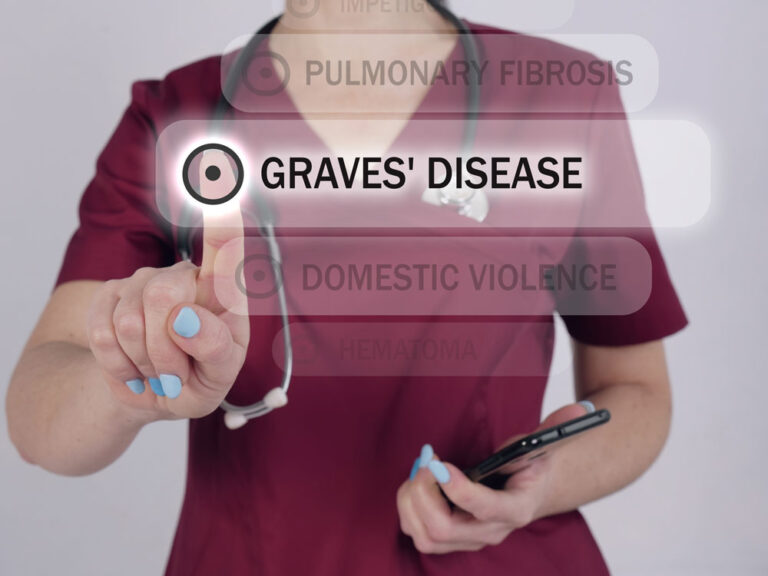
There is more to Thyroid Eye Disease (TED) than bulging eyeballs. TED, also known as Graves’ ophthalmopathy or Graves’ orbitopathy, is an autoimmune inflammatory disorder that affects the orbit (the bony cavity or socket in the skull that houses the eye and its associated structures) and periorbital tissues (the tissues surrounding or lining the orbit of the eye).
TED is characterized by inflammation and swelling of the muscles, fatty tissue, and connective tissue around the eyes. Common symptoms include:
- Bulging eyes (exophthalmos)
- Upper eyelid retraction (the upper eyelid sits abnormally high, exposing more of the eye than usual)
- Lid lag (the upper eyelid does not move downward normally when the eye looks down)
- Redness and swelling of the eyes and eyelids
- Dry eyes or excessive tearing
- Grittiness or irritation in the eyes
- Light sensitivity
- Double vision
- Pain behind the eyes or with eye movement
TED is often associated with Graves’ disease, an autoimmune thyroid disorder, but can also occur in patients with normal thyroid function or other thyroid conditions like Hashimoto’s thyroiditis.
TED is primarily driven by an autoimmune response where the body’s immune system mistakenly attacks tissues around the eyes. This response is often related to antibodies targeting the thyroid-stimulating hormone receptor (TSHR), which is also present in eye tissues.
Besides genetic predisposition, environmental factors like smoking and stress, as well as other autoimmune diseases, can contribute to the development and severity of TED.
TED is more common in women than men, with a median age of diagnosis around 43 years.
Diagnosis is typically made through clinical examination, blood tests for thyroid hormone levels and antibodies, and imaging studies like CT or MRI scans.
While mild cases may resolve on their own, more severe cases of TED can be sight-threatening and require prompt medical attention. Regular monitoring and management by an ophthalmologist or endocrinologist is crucial for patients with this condition.
Treating TED
Treatment options vary depending on the severity of the disease and may include:
- Artificial tears and lubricants for dry eyes
- Steroids or other anti-inflammatory medications
- Selenium supplements can slow the progression of mild to moderate thyroid-related eye disease and improve the appearance and visual function of the eyes. Selenium acts as an antioxidant, fighting free radicals in the body. This may help reduce inflammation and oxidative stress associated with TED.
- Radiation therapy
- Surgery in severe cases
- Teprotumumab, a recently approved medication specifically for TED (brand name: Tepezza)
Tepezza: An infusion treatment specifically for the treatment of TED
Tepezza (teprotumumab-trbw) is a new FDA-approved medication used as an intravenous (IV) infusion to treat TED. It works by reducing swelling behind the eye and treating the cause of TED, not just the symptoms. Tepezza is effective, regardless of disease activity or duration.
Tepezza is classified as an insulin-like growth factor-1 receptor (IGF-1R) inhibitor. Tepezza works by blocking a protein called IGF-1R, which helps reduce swelling behind the eye and address the underlying cause of TED. Tepezza can help reduce eye bulging (proptosis), improve redness, pain, and swelling of the eyes, and improve double vision (diplopia)
Tepezza is distinct from other medications due to its unique molecular structure and is currently only available as a brand-name drug. Tepezza represents a significant advancement in the treatment of TED, offering a targeted approach to address the underlying cause of the disease. Other treatments typically focus on managing symptoms rather than addressing the root cause.
In clinical trials, Tepezza has shown significant improvements in proptosis (eye bulging) and diplopia (double vision). In one study, 83% of patients treated with Tepezza had a reduced proptosis of 2mm or more, compared to just 10% of those receiving a placebo. Some patients experience improvements within six weeks of starting treatment with Tepezza, which is generally faster and less invasive than other treatments.
12Stone Infusion Centers: Making Tepezza Infusions Easier
Tepezza is administered as a series of 8 infusions over 24 weeks, compared to some other treatments that may require ongoing, long-term use. The duration of a Tepezza infusion varies. For the first two infusions, the infusion itself takes about 90 minutes to complete. However, the total time spent at the infusion center may be between 2.5 to 4 hours, including check-in, preparation, and post-infusion monitoring.
For subsequent infusions (3rd to 8th), if the patient tolerates the treatment well, the infusion time may be reduced to about 60 minutes.
Since Tepezza infusions take time, it makes sense to receive them in a place that offers a spa-like, soothing setting. (It makes even more sense, considering stress can worsen symptoms.)
Infusions are given by a certified infusion tech who closely monitors treatments from start to post-infusion monitoring. Patients receive treatment in a private room and can relax in a comfortable, spacious recliner—not a hard and uncomfortable hospital chair. Television, WIFI, and snacks and beverages make the time pass quickly.
If patients prefer infusion treatments at home, a certified infusion tech will come to them and ensure proper administration from start to finish.
12Stone is honored to offer this new treatment that can make living with TED easier.


